7 Former Sub Passengers Recount Their Harrowing Journeys to the 'Titanic' Wreck Site
While one woman described the journey as a "once in a lifetime experience," another passenger said it "was a kamikaze operation”
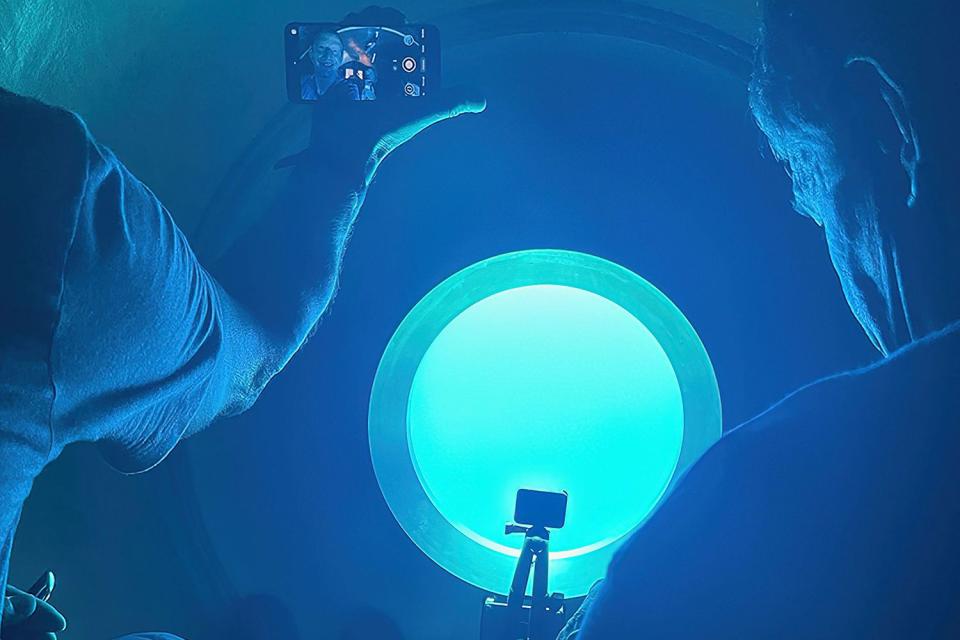
Alamy Stock Photo
Inside the OceanGate TitanAhead of OceanGate Expeditions' ill-fated June 18 dive to the site of the Titanic wreckage, other explorers and enthusiasts had made the journey in an attempt to get a close-up look at the storied ship.
On June 22, hours after estimates suggested the Titan ran out of breathable air, the U.S. Coast Guard confirmed in a press conference that a debris field was found near the site and that it was consistent with a "catastrophic pressure implosion" that would have killed all five passengers onboard the submersive.
Before the news was announced, Michael Guillen, whose sub became stuck in the Titanic's propeller for "the better part of an hour" during his 2000 dive, said the experience was one he'd "never forget."
"My heart goes out to these people that are lost. I’m just so sick to my stomach, to think of those poor people down there,” he said as his voice cracked. “I know what it’s like.”
Here, seven people who've voyaged to the wreckage in the Atlantic Ocean share their experiences.
Chelsea Kellog
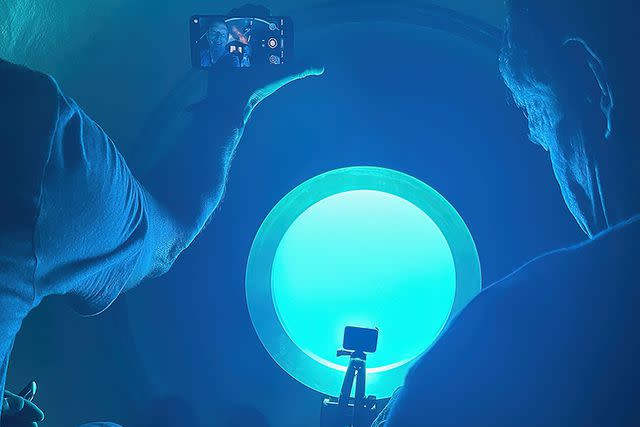
Alamy Stock Photo
A crew aboard the 'Titan'For Chelsea Kellog, her 2022 journey to explore the Titanic was a “once in a lifetime experience.”
Kellogg shared a glimpse into her dive in an Instagram post shared in July 2022 that featured a photo of her from inside the OceanGate submersible with the bow of the Titanic visible through the window.
“My lifelong dream of seeing the Titanic has come true!” Kellogg captioned the post, which included both photos and videos from her trip. “After 13 years of trying, patience and persistence pulled through. I am still trying to process the whole experience. I’m still crying. Still overwhelmed by all the emotions.”
“Dreams DO come true! So incredibly grateful for this once in a lifetime experience!,” she added.
She also thanked the "Oceangate Expeditions team and Horizon Arctic crew" and highlighted the different parts of the sunken ship she was able to see including the telemotor, crow's nest and Marconi room.
David Pogue

CBS Sunday Morning
CBS Correspondent David Pogue on the 'Titan'CBS correspondent David Pogue, who took a journey on the Titan in 2022, recalled a few questionable aspects of the vessel.
In addition to questioning the video game controller that the pilot uses to navigate, he told PEOPLE that “they use rusty construction pipes as ballast.”
“I remember that you are sealed into the sub from the outside,” he continued. “There are 18 bolts around the hatch, and the crew bolts you in from the outside. And I remember it was odd that they put in only 17 of the 18 bolts. The 18th one is way up high, and they don't bother with that one. They say it makes no difference. But little things like that.”
Pogue actually never made it down to the site of the Titanic, though, as their sub had to return to the surface after descending just 37 feet.
The journalist said he was impressed by the interior of the vessel, which he described as being the size of a minivan.
“This submersible is very different from all the ones I had researched and looked at pictures of,” he said. “Those tend to be very cramped, very homely, and filled with cockpit controls. I mean, they look like a space shuttle cockpit. This sub is modern looking. It has very cool lighting.”
“And then there's a touchscreen computer that the pilot uses for functions like the lights and the air and the measurements of depth and so on, and communicating with the surface,” he added. “So it felt like you're getting into a minivan without chairs. The sub is made from a carbon fiber cylinder, so the walls are curved. So you sit there on the floor with your back against the curved wall. It holds five people comfortably as long as they alternate back, feet, back, feet, you know what I mean?”
He explained that despite the pleasant appearance of it all, certain aspects of the journey were uncomfortable.
“But as you dive, it gets colder and colder and colder,” he explained. “And so they instruct you to wear layers and bring winter jackets and the ski socks because you don't wear shoes onto the sub. It's also probably worth mentioning that there is no real toilet on board. There is a pee bottle and a set of Ziploc bags. That's basically it. And if you have to go, you go to one end of the sub and you draw a privacy curtain, and Stockton [Rush, CEO and founder of OceanGate, who was aboard the missing vessel] turns up the music loud and you go.”
Before the dive, Pogue explained that “it is treated much like a rocket launch” in terms of the preparation.
“There are elaborate countdowns and checklists and inspections and there are twice daily mandatory briefings about the weather and the submersible required for everybody, even those who are not diving,” he said. “So I would definitely say there was a culture of safety in the operation of this submersible.”
And while the staff explains to the passengers what to do if things go south, Pogue said that “really, the only emergency that you can do anything about is a fire in the cabin. So he showed us where the fire extinguisher was. We tried putting on the smoke masks. Beyond that, the only thing you can do about a disaster is rise to the surface as quickly as possible.”
He said he was required to sign a waiver ahead of the trip which he explained is “quite clear about all the ways that you could be permanently disabled, emotionally traumatized or killed.”
“So everybody doing this goes in with their eyes-wide-open that this is an experimental vessel,” Pogue said. “The waiver says ‘This vessel has not been inspected or certified by any government body.' So you know very well that it is a one of a kind vessel."
Mike Reiss
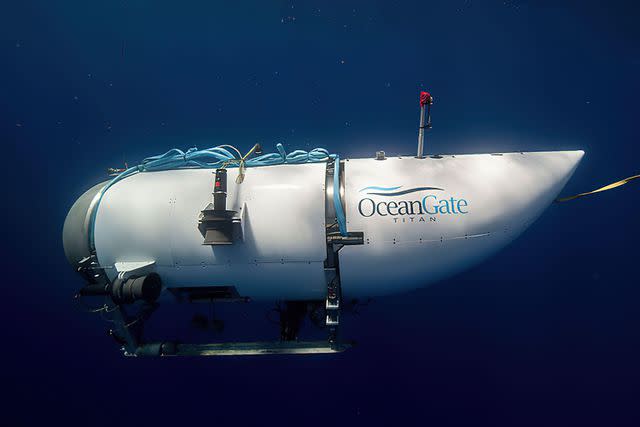
Alamy Stock Photo
The Oceangate submersible, 'Titan'While for many, the trip miles under the ocean’s surface is a “once in a lifetime” opportunity — for Mike Reiss, it's been four times.
In an interview with ABC News, Reiss explained that “Every time they lost communication — that seems to be just something baked into the system.”
During one of his trips, he told the outlet, it took the team three hours to find the wreckage even though they had landed “just 500 yards from the ship.”
"It is always in the back of your head that this is dangerous, and any small problem will turn into a major catastrophe," he recalled and added that he had signed "a waiver that mentions death three times on the first page."
Fred Hagen
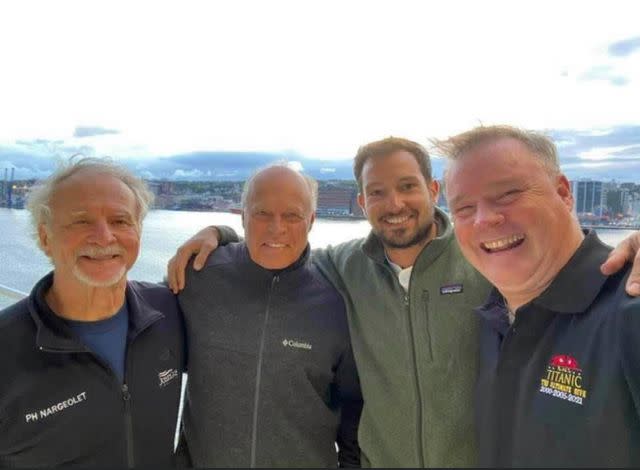
Courtesy of Fred Hagen
From L-R: Paul-Henri Nargeolet, Fred Hagen, Bretton Hunchuk and Dave Concannon in July 2021.Fred Hagen, whose friend Paul-Henri Nargeolet was one of the five passengers killed aboard the missing sub, had previously visited the wreckage himself on the Titan and called the vessel “a state-of-the-art vehicle.”
"You're in a titanium tube that’s about 20 feet long … So you can’t get out unless somebody unbolts it,” he told PEOPLE. “And you clearly understand and you sign off that you understand that this is a highly risky endeavor that could result in death.”
Despite the risk, Hagen believes the dive is a "majestic endeavor."
Alan Estrada
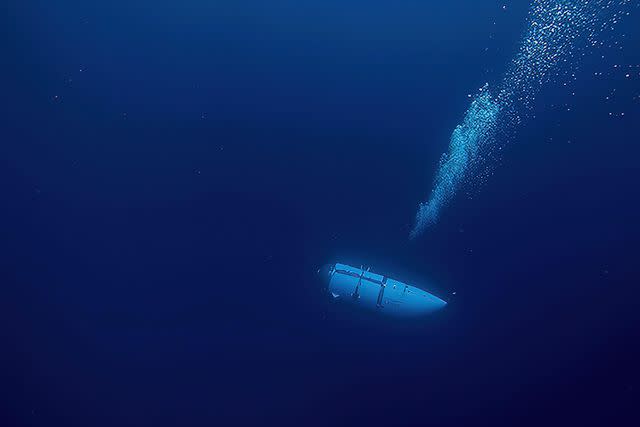
Alamy Stock Photo
The Oceangate submersible 'Titan' in the waterAlan Estrada, a YouTuber and entertainer from Mexico, documented his 2022 journey on the Titan through a series of videos shared to the video sharing platform.
In one video, Estrada showed his view from inside the vessel, including the aspects of the ship they were able to explore. Voices were heard in the background expressing their amazement at what they'd witnessed and at one point, someone pointed out that they were looking at the ship’s grand staircase.
Estrada’s time exploring the wreckage was cut slightly short, he explained in Spanish in one of the videos. In addition to it taking the team a while to locate the ship, they also needed to begin their ascent after the submarine’s battery reached 40 percent — which he explained is the point at which for safety reasons, they must begin to make their way up.
Though he was promised four hours to explore the Titanic, in addition to the lengthy descent and ascent, his time at the site was a little over an hour, he explained.
“I honestly, as a participant in these expeditions, knew perfectly well the risks we were involved in,” he told Reuters in a translated interview. “We signed a release, several sheets, I don’t remember how many, which explains each of the risks you run, including losing your life. Those who are involved in these expeditions know it is an incredibly risky expedition. We know that we are not going to an amusement park.”
Arthur Loibl
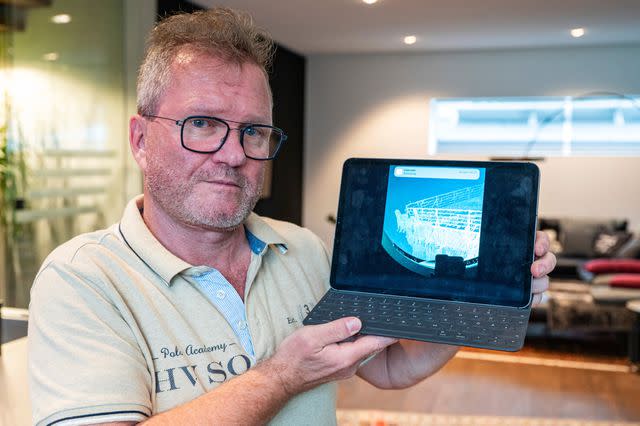
Armin Weigel/dpa via AP
Arthur Loibl, who has previously explored the 'Titanic' wreckage siteArthur Loibl was one of OceanGate’s first dive customers and initially signed up for a 2019 dive costing $110,000 that ultimately fell through after the first sub didn’t make it past testing, according to the Associated Press.
“You have to be a little bit crazy to do this sort of thing,” Loibl told AP of the dive.
For his dive, he was accompanied by Rush, Nargeolet and two others from England, the AP explained.
“Imagine a metal tube a few meters long with a sheet of metal for a floor. You can’t stand. You can’t kneel. Everyone is sitting close to or on top of each other,” Loibl told AP. “You can’t be claustrophobic.”
He said that during the two-and-a-half-hour journey to the site — and the two-and-a-half-hour trip back up — all of the vessel’s lights were turned off in an effort to conserve energy, and they instead used glow sticks.
Loibl admitted that he now sees that the mission “was a bit dubious.”
“I was a bit naive, looking back now,” he said. “It was a kamikaze operation.”
Michael Guillen
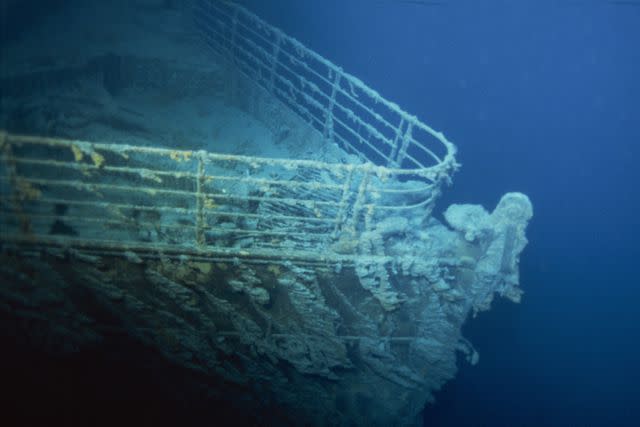
Xavier DESMIER/Gamma-Rapho Getty
A view of the 'Titanic'Michael Guillen’s experience exploring the site of the Titanic wreckage dates back more than 20 years, when he was asked to be “the first correspondent to report from the Titanic" in September 2000, he told Sky News.
He said while he had a “deathly fear of water” he couldn't say no to the opportunity.
After making the journey to more than two miles below sea level, Guillen explained that their vessel first explored the bow of the ship, and they held a moment of silence for the people who died following the Titanic crash more than 100 years ago. “It’s all very somber, very haunting,” he said.
Guillen said as they made their way over the back of the boat, which is positioned so that the propeller is exposed, he was struck by how large the propeller was compared to their vessel.
He said he felt the sub speed up, which he later found out was because they had been caught in a “very high-speed underwater current.” The vessel was then “slammed right into the blades of the propeller” and "became trapped” behind its blades.
“Not only did we feel the collision, but also huge pieces of the 'Titanic' started falling down on us and we knew we were in trouble,” he said.
“When you were down there, my first concern was panic,” he continued after the interviewer asked how they were able to get free. “Would there be anybody, the pilot or my diving buddy, would they panic because we had been told a story on board the ship before we dove of a man who was caught in a similar situation and in his panic went to the escape hatch, thinking he would go out that way — he wasn't thinking obviously — and of course, expedited his doom.”
He said he began trying to figure out how they might be able to get out for the “better part of a half hour” while the pilot attempted to wiggle them free.
“I finally really hit a brick wall and realized, no this is the end of it, and this voice in my head, actually said to me, and I’ll never forget the words, ‘This is how it's going to end for you’. ”
“For me, that was a bitter pill to swallow,” he added.
After “the better part of an hour,” the pilot was able to free the sub.
“It’s an experience that I’ll never forget in my life and my heart goes out to these people who are lost. I’m just so sick to my stomach, to think of those poor people down there,” he said as his voice cracked. “I know what it’s like.”
For more People news, make sure to sign up for our newsletter!
Read the original article on People.

